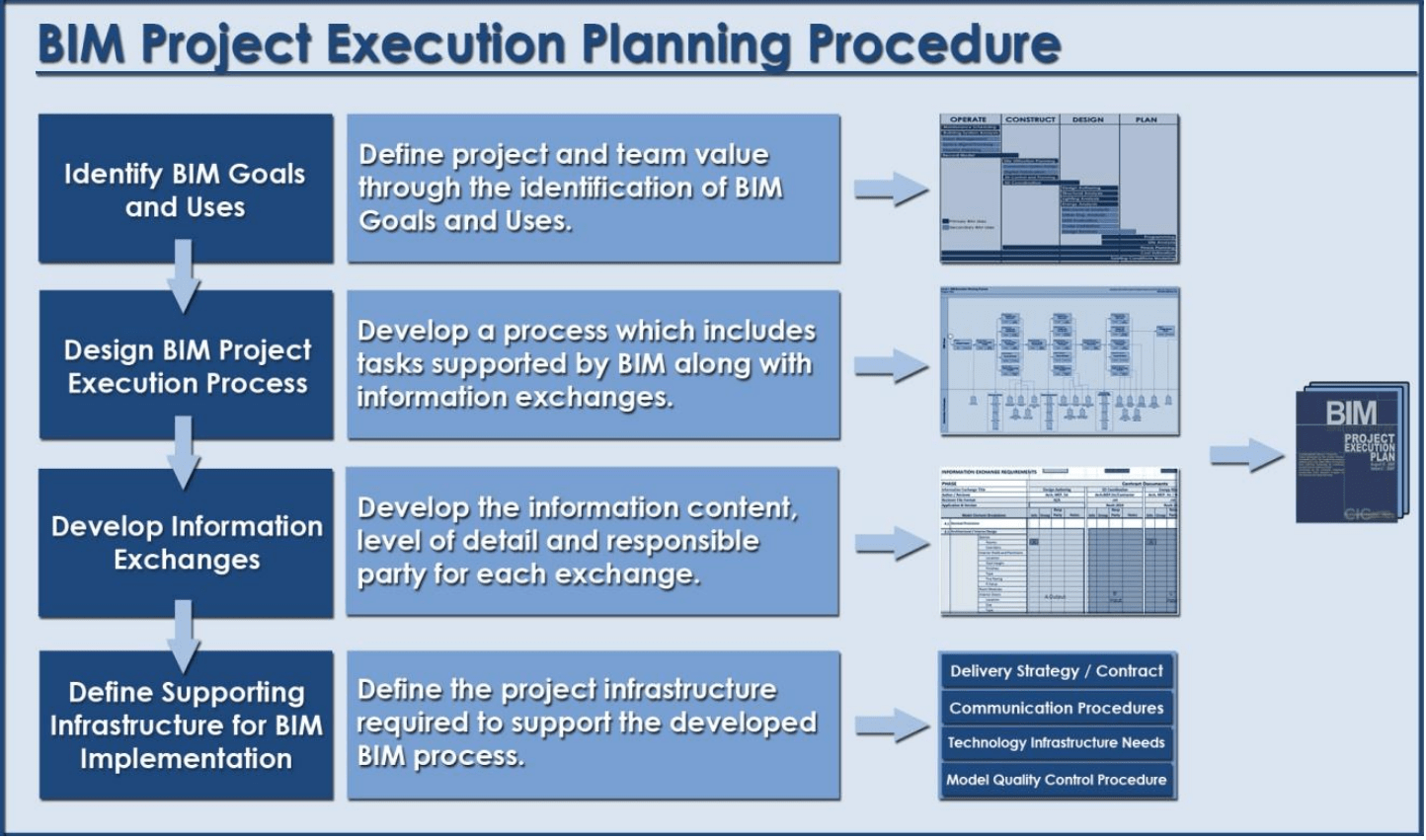
What Exactly is a BIM Execution Plan?
"The government will require fully collaborative 3D BIM (with all project and asset information, documentation and data being electronic) as a minimum by 2016."
…That was the mandate set out in the UK’s Government Construction Strategy published in May 2011.
With the UK governments requirements of BIM falling in lines with what is defined as Level 2 BIM, it is hoped that the government’s mandate will lead to rest of the industry following suit, gradually developing towards also adopting Level 2 BIM as a minimum in the future.
PAS 1192-2:2013 - The Birth of the BEP
In order to understand just what BIM Level 2 is and how to go about implementation of a BIM Level 2 workflow, the UK government has set out a series of Publically Available Specifications (PAS 1192). Built on the existing code of practice for the collaborative production of architectural, engineering and construction information (BS 1192:2007 + A2:2016).
Within PAS1192-2:2013 which deals with the ‘Specification for information management for the capital/delivery phase of construction projects using building information modelling’ it is proposed that a BIM Execution Plan or BEP should be adopted for managing the delivery of a project.
Each BIM workflow comes with subtle differences owing to the needs and requirements of the stakeholders involved and ultimately the requirements of the asset that is required.
The Need for a BEP
BIM Level 2 represents a significant shift in how built assets are designed, delivered and maintained. However there is no one size fits all approach to BIM, as with each project, each BIM workflow comes with subtle differences owing to the needs and requirements of the stakeholders involved and ultimately the requirements of the asset that is required.
A BIM Execution Plan is defined as a “… plan prepared by the suppliers to explain how the information modeling aspects of a project will be carried out”. It helps to ensure all parties are on the same page when it comes to BIM, and is an essential element of projects adopting BIM. Particularly for large or complex projects with a number of parties working in collaboration.

What It Entails
A BIM Execution Plan should form a one-stop reference point for collaboration on a project. Including how the data that is added to BIM files is collected, added, managed and shared. As well as agreed upon roles and responsibilities within the BIM process, detailing who is doing what, and which procedures they will use.
As well as roles and responsibilities a concise BIM Execution Plan should set out working procedures such as file naming conventions, layer naming conventions, drawing sheet templates and other practical considerations.
Types of BIM Execution Plans
There are two commonly accepted types of BIM Execution Plans. More specifically the pre-contract and post-contract plan.
Pre-contract BIM Executions Plans – are for use during the tendering stage of a project. The company providing a tender will set out their proposed approach to implementation. This form of a BIM Execution Plan may be developed wholly by the company providing a tender, or it may be based on meeting the requirements specified by the employer. In cases of the latter it is common for the company wishing to receive tenders to compile a document setting out their requirements, such as Employer’s Information Requirements (EIR).
Post-Contract BIM Execution Plans – are for once a contract has been awarded. It sets out how the information required in the Employer’s Information Requirements (EIR) will be delivered. Where more than one company/supplier is to be appointed there is often a need for one overriding BIM Execution Plan, with responsibility for which party is responsible for its creation set out in an appointment document.
